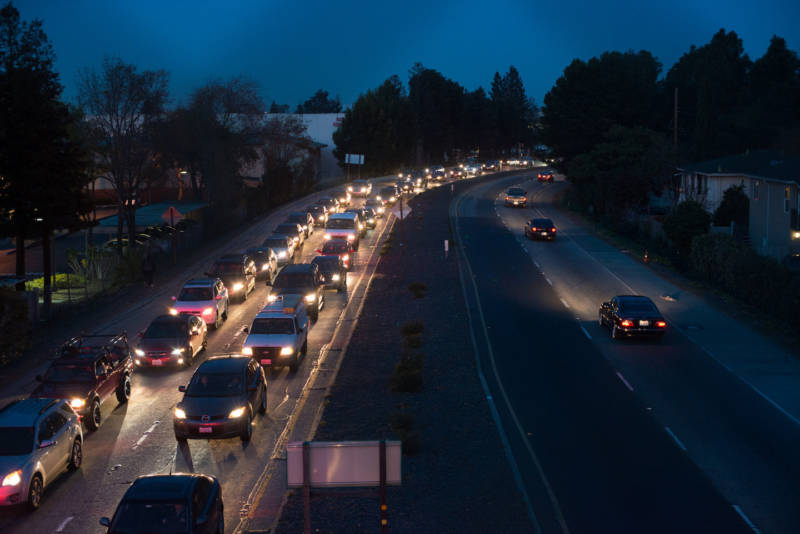Silicon Valley is booming, and with it comes new real estate development, higher salaries and more traffic, according to a new survey released on Friday.
According to this year’s economic survey from Joint Venture Silicon Valley, commute times have increased by more than 20 percent over the past 10 years, adding an additional 43 hours of driving time per commuter annually. The report was released at the nonprofit’s annual State of the Valley event.
“It’s rolling now to a crescendo,” said Russell Hancock, CEO and President of Joint Venture. “Cities are also realizing that when they have employers in their boundaries it creates externalities, and one of those is traffic jams.”
The report also finds the cost of housing plays into the traffic problem. Over the past two years, the median home price has increased by $300,000, bringing it to $1.2 million last year. Compare that to $221,000 — the median price in the U.S. overall.
The number of homes on the market has also decreased significantly. In 2018, there were half as many home sales as there were in 2004.

